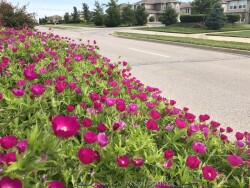
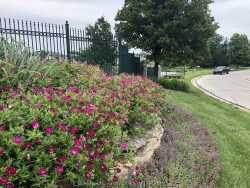
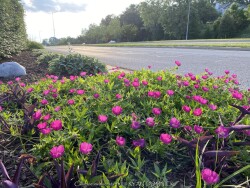
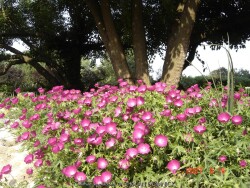


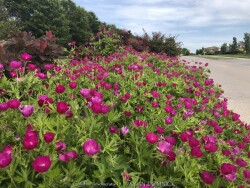
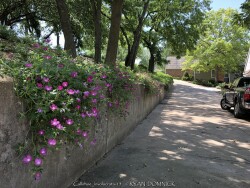


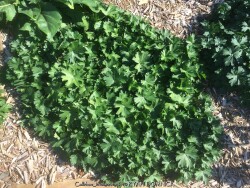


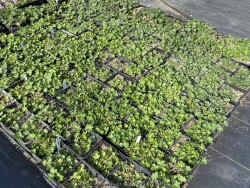
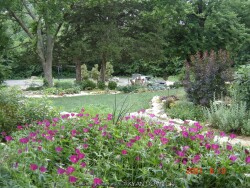
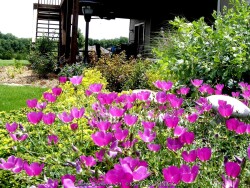
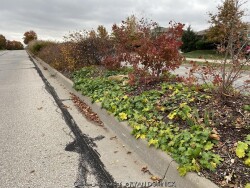
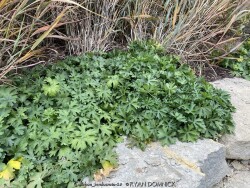

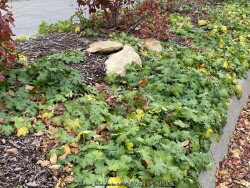


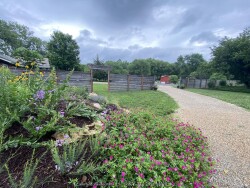
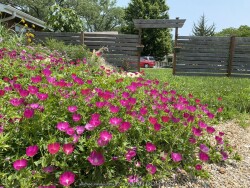
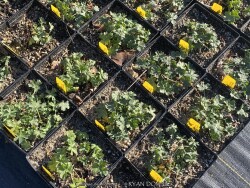
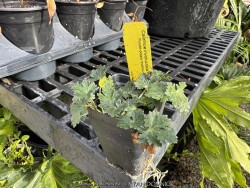
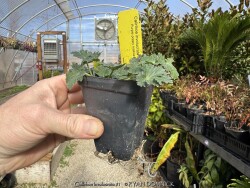
Plant Min Zone: 4a
Plant Max Zone: 9a
Sunlight: All Day Full Sun, Full Sun, Part Sun
Water / Rainfall: Very Low, Low, Average
Soil Quality: Poor, Average
Bloom Season: Early Summer, Summer
Flower Color: Magenta
Berry / Fruit Color: None
Spring Foliage Color: Green
Summer Foliage Color: Green
Fall Foliage Color: Green
Evergreen Foliage: Some
Winter Interest: No
Scented Flowers: No
Drought Tolerance: High
Wet-Feet Tolerance: Low
Humidity Tolerance: Medium, High
Wind Tolerance: High
Poor Soil Tolerance: Rocky Soils, Sandy Soils, Shallow Soils, Acidic Soil (low PH), Alkaline Soils (high PH)
Height: 0.5' - 0.75'
Width: 2' - 3'
Growth Rate: Slow, Medium
Service Life: Medium: 3-5 years
Maintenance Need: Medium
Spreading Potential: Medium
Yearly Trimming Tips: Trim Perennial to 3-6" Above Ground in Summer After Blooms: Forms Basal Foliage Growth.
Plant Grouping Size: Medium Grouping of 5-10, Mass Planting of 10 or more
Best Side of House: South Exposure, West Exposure, East Exposure
Extreme Planting Locations: Survives Severe Drought, Tolerates Extreme Heat, Top of Retaining Wall Locations, Crevice Gardens
Ornamental Features: Multiple Seasons of Interest, Long Blooming Season, Long Lasting Fall Color, Bright Winter Color
Special Landscape Uses: Groundcover, Naturalizing
Possible Pest Problems: Rabbits, Stem/Crown Disease
Plant Limitations: Unwanted Self-seeding, May be Dormant in Summer, Needs Excellent Drainage, Sometimes Mistaken as Weed
Shippable in 2026: YES
Wine cup (Callirhoe involucrata) is also called purple poppy mallow. This plant grows from a carrot like taproot sporting a cluster of semi evergreen foliage around the base. In spring, new prostrate growing vines spread in all directions along the ground up to 3 to 4 feet away from the taproot but do not root along the way. By late May or early June, magenta red "wine cup" shaped flowers cover this plant. The show last for about 4 to 6 weeks or until severe summer drought sets in. Usually in July, the flowering is complete and will set seed if allowed. Foliage will look bedraggled enough to justify complete cut back. This may be a good time to mulch unless you already mulched during the spring. When cooler weather returns in the fall, new growth emerges from the taproot looking attractive again. Secondary flowering may also occur in early fall.especially on summer planted plants. Poppy mallow winecup is a native plant of the great plains south to Texas and includes most of Kansas. As with most plants native to prairie areas, winecup appreciates well drained soil and full sun. However we have found that it will tolerate almost full shade if needed and our 40 inches of rain per year. A great plant for the top of a retaining wall, native pollinator gardens, or to even among other perennials to provide texture and contrast. It's one Achilles' heel is rabbits. Rabbits are usually only a problem in crowded suburbs where they have a little wild vegetation to eat and no predators. Gardeners with lots of established plants usually do not have rabbit problems. If rabbits are a problem for you, and you still want to grow wine cups, cover the plant with a bowl shaped piece of chicken wire attached with weed barrier pins. This will allow the taproot and basil foliage to get established the first year without any browsing; after removing the cage the second year, the plants will generally outgrow any rabbit browsing. Other problems could be root rot but I have generally not seen that even in clay soils in Lawrence Kansas. Self seeding should be allowed to gently occur around the base of the plant to ensure a thick groundcover; these plants tolerate crowded conditions and will not crowd each other out or need division. This is one of the most iconic and beautiful native wildflowers!